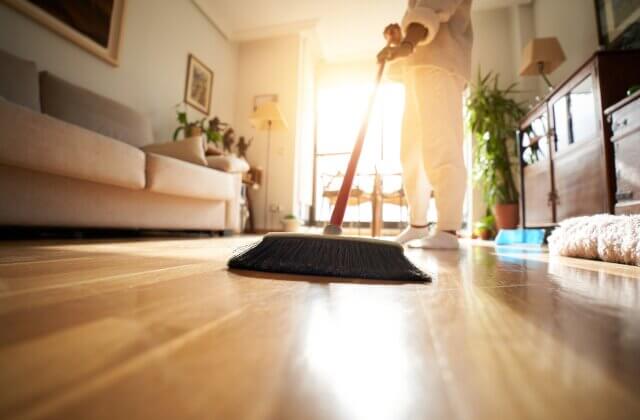
Even a clean and well-maintained house can have hidden dusty areas. That dust–composed of skin cells, pollen, and dust mites–floats in the air, causing poor air quality and triggering allergy symptoms.
Indoor air can be two to five times more polluted than outdoor air. Since we spend 90% of our time indoors, eliminating these triggers can reduce allergy and asthma symptoms.
11 Easy-to-Forget Places Your House is Collecting Dust
The American Lung Association says a regular dusting regimen improves indoor air quality. Most people include vacuuming floors and dusting furniture in their cleaning routine. This article covers easy-to-forget places that collect dust in your home.
Light Fixtures and Ceiling Fans
Chandeliers, kitchen island pendants, and ceiling fans are above eye level so you won’t notice the dust. But a closer look reveals a surprising amount. Set a reminder to dust light fixtures monthly.
Drapes and Blinds
Quick question: when is the last time you cleaned the drapes or dusted the blinds? The typical homeowner overlooks these chores. Launder washable curtains every three months. Use a drapery cleaning service for window coverings that are dry clean only. For example, SERVPRO cleans window treatments in your home or in their facility with processes to prevent fading or shrinking. Technicians restore dirty blinds by submerging them in an ultrasonic bath that removes dirt and stains.
Wipe down blinds once a month. Curtains need cleaning every three to six months or more frequently if a household member has allergies.
Bedding
Dust mites feed on shed skin cells, so it’s important to wash all of your bedding, not just the sheets. Throw the blankets, comforters, and pillows in the laundry, too. Wash the comforter once a month and launder the pillows twice a year.
Under the Furniture
Once a quarter, move your bed, dresser, and sofa and clean underneath. It’s inconvenient, but you’ll find mountains of dust bunnies beneath. Also, vacuum the bottom of the mattress.
Electronics
Your television, speakers, computers, monitors, and keyboards gather a lot of dust. Use a damp towel or microfiber cloth to wipe them down. Pick up each piece of equipment and wipe it underneath and behind it.
Baseboards and Door Frames
It’s easy to overlook the baseboards when you’re cleaning. The same goes for other small horizontal surfaces like door frames, chair rails, and mounted picture frames. Use a damp cloth to dust these surfaces. The brush attachment on your vacuum also works well.
Bookshelves, Furniture Tops, and Cabinet Tops
A thorough dusting of your bookshelves starts with moving the books and knickknacks. Wipe down every shelf, then dust the books and collectibles before replacing them. Consider giving things away if your shelves look cluttered.
Also, dust the top of the bookcase using a step stool if needed. If there is space above the kitchen cabinets, dust there as well. You might need a different cleaner in the kitchen because you’re cleaning grease as well as dust.
Sofas and Chairs
Dust doesn’t show on upholstered furniture like on a coffee table. But sofas and armchairs can gather a lot of dust. Vacuum cloth furniture with an upholstery attachment and lift the cushions to vacuum underneath them. Also, use the crevice tool to capture any crumbs. Wipe down faux leather or other washable furniture.
Air Filter
Most manufacturers recommend replacing the filter for your heating and air conditioning system every three months. A dirty filter won’t remove dust particles from the air and could blow dirty air through your home. Also, check the air vents in each room and dust them if needed.
Plants
In nature, plants have rain to clean their leaves, but indoor plants can get dusty. Dust affects a plant’s ability to absorb sunlight and can make a plant unhealthy. Wipe them occasionally with a damp paper towel.
Window Sills
Often concealed by curtains or furniture, it’s easy to forget to clean window sills. Their proximity to windows means this surface could have a layer of dust, pollen, or even mold. Depending on the condition and material, wipe the sill with a dry cloth first, then spray it with an appropriate cleaner and wipe it again.
Achieving Better Indoor Air Quality
Looking at this list of to-dos may seem daunting, but remember, not all chores must be done each time you clean. Make a schedule and set reminders for infrequent tasks like changing air filters. Keep supplies of ceiling fan dusters on hand and get outside help for jobs like cleaning draperies and blinds. Then breathe easily and enjoy better indoor air quality.
